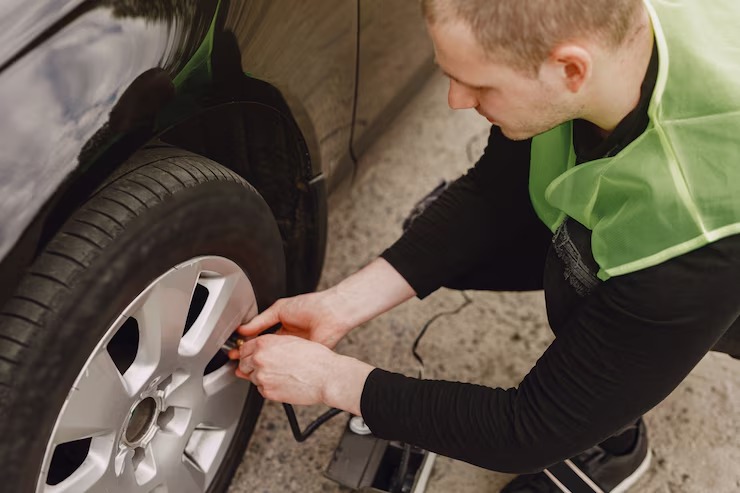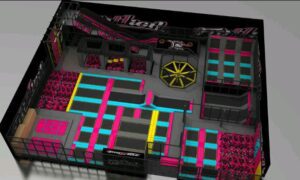When purchasing a vehicle, whether new or used, one of the most crucial aspects to consider is the condition of the tires. This is especially true for richland used cars. Tires play an essential role in the overall safety, performance, and longevity of a vehicle. A thorough tire safety check ensures you are not inheriting costly repairs or driving a car with unsafe tires. Proper tires help with traction, ensure effective braking, and can even improve fuel efficiency. In this article, we’ll walk you through the essential tire safety checks you should conduct before buying a car, ensuring you’re making a well-informed decision.
Why Tire Safety Matters
Tires are the only point of contact between your vehicle and the road. As a result, they are critical to your vehicle’s overall safety. If tires are improperly inflated, worn out, or damaged, they can compromise your car’s handling, increase the risk of accidents, and even lead to breakdowns.
For those purchasing a used vehicle, it’s particularly important to inspect the tires closely before finalizing the purchase. Poor tire condition can affect braking, steering, and overall vehicle stability—especially in adverse weather conditions like rain or snow. Whether you’re purchasing a used car or new, checking the tires is a critical part of the buying process. Ensuring the tires are safe and in good condition is essential to protecting yourself on the road.
Key Tire Safety Checks
Before you finalize your car purchase, there are several important tire safety checks to complete. These checks will help you identify any immediate issues with the tires and give you a better understanding of how well the car has been maintained.
Tire Tread Depth
The tread depth on your tires is one of the most important safety factors to assess. The tread on a tire is what provides grip on the road, particularly in wet or slippery conditions, and helps with braking and turning. Over time, the tread wears down, reducing the tire’s ability to perform effectively.
To check the tread depth, use the “penny test.” Place a penny into the tire’s tread with Abraham Lincoln’s head facing down. If you can see the top of his head, the tread is too shallow, and the tire should be replaced. A tread depth of 2/32 of an inch is generally considered the minimum safe level, though experts recommend replacing tires when the tread reaches 4/32 of an inch, especially for wet driving conditions.
Tire Inflation
Proper tire inflation is essential for safety and the overall performance of your vehicle. Under-inflated tires can cause poor handling, increased tire wear, and decreased fuel efficiency. On the other hand, over-inflated tires can lead to a rough ride and increase the risk of tire blowouts.
Make sure to check the tire pressure on all four tires to ensure they are properly inflated. Use a tire pressure gauge, which is easily found at gas stations or auto supply stores. The manufacturer’s recommended tire pressure is typically located on a sticker inside the driver’s side door frame or in the vehicle’s owner’s manual. If the tire pressure is not within the recommended range, it could be an indication of improper maintenance or even a potential issue with the vehicle.
Tire Alignment and Balance
Tire alignment and balance play a crucial role in the tire’s performance and safety. Misalignment can cause uneven tire wear, making the vehicle harder to handle. Uneven wear can lead to handling problems, especially when turning or driving at higher speeds.
To check for alignment issues, inspect the tires for uneven tread wear. For example, if the tires are more worn on one side than the other, the vehicle may have alignment issues. If you notice the vehicle pulling to one side or vibrations while driving, it could indicate alignment problems. If the tires are unbalanced, you may experience shaking or a bumpy ride. These issues should be addressed before purchasing a car.
Tire Age
The age of a tire is a crucial factor in determining its safety and performance. Tires naturally degrade over time, even if they look fine on the outside. Rubber can dry out and crack, compromising the tire’s integrity and making it unsafe to drive on.
You can check the age of a tire by looking at the DOT code printed on the sidewall. The last four digits of the code represent the week and year the tire was manufactured. For example, “1818” means the tire was made in the 18th week of 2018. Most tire manufacturers recommend replacing tires after six years, even if they show no visible signs of wear. Tires that are over 10 years old should always be replaced, regardless of their condition.
Inspecting for Visible Damage
Aside from wear and tear, you should also inspect the tires for any visible damage. This includes cracks, cuts, punctures, or bulges in the sidewalls. These types of damage can be caused by hitting curbs, potholes, or even from age and exposure to harsh conditions. Sidewall damage can lead to tire failure, and bulges are particularly concerning as they indicate internal damage that can result in a blowout.
Before purchasing a used car, thoroughly inspect each tire for visible signs of damage. Even minor damage should not be ignored, as it could lead to dangerous driving conditions. If you spot any significant damage, it’s best to walk away from the deal or request the tires be replaced before completing the purchase.
Understanding Tire Wear Patterns
Tires naturally wear down over time, but certain wear patterns can indicate more serious underlying issues with the vehicle. Identifying these wear patterns before purchasing a used car can give you insight into potential problems with the vehicle’s alignment, suspension, or maintenance.
- Uneven wear: This is a sign of misalignment, suspension issues, or improper inflation. If the tires show more wear on one side, it could point to a misalignment problem.
- Center wear: If the tread is worn evenly across the middle of the tire, it might indicate that the tires are over-inflated.
- Edge wear: Worn edges on the tires typically suggest that the tires were under-inflated or that the vehicle’s alignment is off.
These patterns can help you identify potential issues that could affect the car’s handling and safety. If you notice any of these signs, it’s worth having the car inspected by a professional before purchasing it.
Professional Tire Inspections
While you can perform a basic tire inspection yourself, it’s always a good idea to have a professional technician look at the tires before making your purchase. A mechanic can assess the overall condition of the tires, checking for internal damage or structural issues that may not be visible to the untrained eye. They can also check the alignment and balance of the tires to ensure they are functioning optimally.
A professional inspection can provide you with peace of mind, knowing that you’re not inheriting any hidden tire issues that may cost you more money in the long run.
Negotiating the Price Based on Tire Condition
Once you’ve completed your tire safety checks, you can use the information you’ve gathered to negotiate a better price. If the tires are in poor condition, it could be a sign that the vehicle has not been properly maintained. Tires can be expensive to replace, so if the tires are worn or damaged, you can request the dealership to lower the price of the car to reflect the cost of replacing them.
On the other hand, if the tires are in excellent condition, this can be a positive factor when negotiating the price. You may be able to use this to your advantage when discussing the price of the car.
Conclusion
Before purchasing a used car, ensuring that the tires are in good condition is an essential step in the process. A proper tire safety check will help you avoid hidden costs and potential safety issues that could arise later. By examining the tread depth, tire inflation, age, and signs of visible damage, you can make a more informed decision and ensure the vehicle is roadworthy. If you are unsure or notice any issues, it’s always a good idea to consult a professional for a more thorough inspection. By taking the time to assess the tires, you can make a more confident purchase and enjoy your car with peace of mind.



































